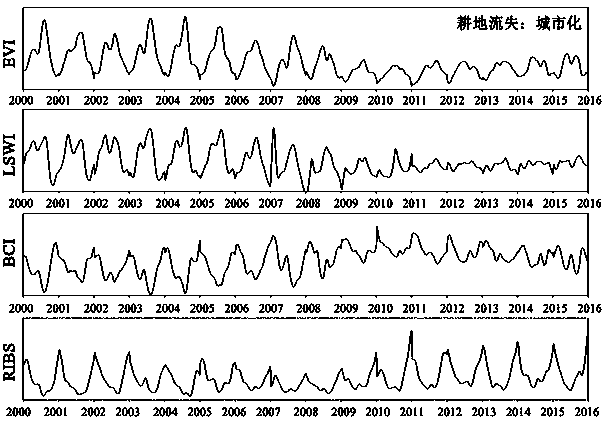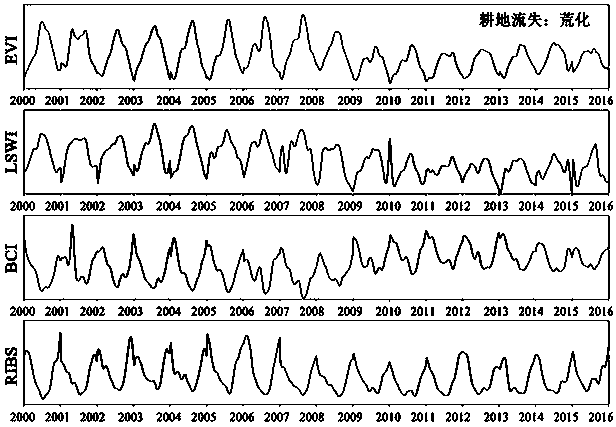Identification method of vegetation loss and direction based on multi-remote sensing index change trend
A technology of changing trends and identification methods, which is applied in the field of remote sensing information processing, can solve problems such as the difficulty in realizing continuous automatic monitoring, the degree of automation needs to be improved, and the lack of geographical significance, etc., to achieve clear methods, stable and reliable results, and good geographical interpretation meaning effect
- Summary
- Abstract
- Description
- Claims
- Application Information
AI Technical Summary
Problems solved by technology
Method used
Image
Examples
Embodiment Construction
[0021] The technical solution of the present invention will be specifically described below in conjunction with the accompanying drawings. The following are specific embodiments of the present invention.
[0022] The invention provides a method for identifying vegetation loss and direction based on the changing trend of multi-remote sensing indices, such as figure 1 Shown: first establish the multi-year time-series data set of vegetation index, impervious surface index, soil exposure index, and water body index in the study area, and then determine and extract the vegetation change area based on the time-series similarity change of vegetation index, and then combine the changes of multiple remote sensing indexes Trend feature, automatic recognition of vegetation flow loss.
[0023] further comprising the following steps:
[0024] Step S01: Establish vegetation index, impermeable surface index, soil exposure index, and water body index time series data sets over the years;
...
PUM
 Login to View More
Login to View More Abstract
Description
Claims
Application Information
 Login to View More
Login to View More - R&D
- Intellectual Property
- Life Sciences
- Materials
- Tech Scout
- Unparalleled Data Quality
- Higher Quality Content
- 60% Fewer Hallucinations
Browse by: Latest US Patents, China's latest patents, Technical Efficacy Thesaurus, Application Domain, Technology Topic, Popular Technical Reports.
© 2025 PatSnap. All rights reserved.Legal|Privacy policy|Modern Slavery Act Transparency Statement|Sitemap|About US| Contact US: help@patsnap.com



